TGN Interviews Alyssa Davis on the World’s Best Fertilizer, Food Swaps, and Why Weeds Aren’t the Enemy
Nominee: Alyssa Davis
Home Digs: Frankfort, NY
Organization: Brick House Acres, BHA Rabbitry
Follow At: Brick House Acres (Facebook); BHA Rabbitry (Facebook)
Fast Facts: Alyssa Davis loves to see things grow—be it a rainbow of flowers and veggies in her family’s garden center; the heritage-breed rabbits she raises; “u-pick” organic berries on their hillside; or the seven children who fill her days with energy, enthusiasm, and laughter. Alyssa and her husband, Sean, are committed to selling only safe, organic, and environmentally sound products at their farm, Brick House Acres. Their customers show a high regard for their plants and expertise—shared graciously through attentive customer service, workshops, and family-friendly food swaps. “People have lost touch with where their food comes from,” says Alyssa. “They have lost the fundamental knowledge to feed themselves.” Her passion is teaching her children and others how to produce wholesome, homegrown food, “even if they feel like they have a black thumb.”
___________________________________________

Your pick-your-own berry farm sits on 42 acres of organic, no-spray farmland. Can you detail the specific natural weed suppression techniques that allow your operation to thrive?
We have an acre each of raspberries and blueberries. After years of striving for perfect, weed-free rows, I realized that our weedy berry patch was still doing just fine. We have learned that weeds are not the enemy. Some actually benefit the berry bushes. Clover and vetch fix nitrogen, and the deep taproots of dandelions and plantain help to loosen the soil. In May, we remove taller weeds (such as goldenrod) in our raspberry rows and apply a deep mulch of rabbit manure, old hay, and wood chips to suppress future weeds and conserve soil moisture. My husband mows the grass in the aisles and weed-whacks around the blueberry bushes. The kids cut or pull weeds that are growing in the bushes and pile them between plants to act as mulch. If you use this method, be sure to pull the weeds before they flower to prevent weed seeds in the row.
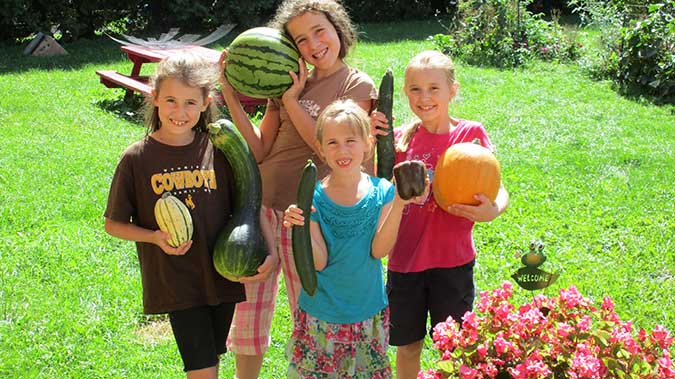
Similarly, how do your planting practices prevent invasion from pests and natural predators?
We use a deep mulch method in our gardens. We also recommend planting flowers among your vegetable plants to attract pollinators and beneficial insects. Our only real pests are Japanese beetles on our raspberry plants. We send the kids out early in the morning with cups of soapy water to collect beetles. After rinsing and counting, the beetles are fed to our chickens for extra protein. We pay our children a penny a beetle. Last summer, one of our daughters earned over $20 in beetles!
Your farm grows raspberries, blueberries, and blackberries. Is there a specific variety for each that you prefer—and why don’t you grow strawberries?
We planted three varieties of raspberries when we first moved in: Nova, Encore, and Autumn Britten. The canes were purchased from Nourse Farms in Massachusetts. Nova is our favorite by far. The Encore canes were spindly and never took off, so we ended up tearing them out and replacing them with Nova. Nova is a very adaptable, cold-tolerant variety. It bears a heavy crop in July. Sometimes, we will get a small second crop in October if the frost doesn’t hit them first. The sturdy, upright canes are easy to trellis and hold up well during the winter months.
Autumn Britten is an ever-bearing variety. It produces fruit sporadically in July, then a beautiful fall crop in September. We prefer to mow the Autumn Britten canes down when dormant to maximize the fall crop. The summer berries are okay, but the size and flavor are much better in the fall.
The farm had 1.5 acres of strawberries when we purchased it in 2007. The previous owner practiced low-spray methods. After harvest, he mowed down the plants, cultivated between the rows, and drenched the field with pre-emergent herbicides. In November, we had to cover the strawberry rows with a layer of straw to protect them from the harsh winter weather. In April, the straw was raked into the aisles to suppress weeds between the rows. We decided that we did not want to spray any chemicals on our property. We tried a variety of methods for a few years, including a flock of “weeder” geese and weeding crews, but ultimately decided it was nearly impossible to manage a plot that large without herbicides. We were already overwhelmed by taking on a working farm and business while raising four young children. We decided to turn the strawberry patch into pasture and raise grass-fed beef for our family instead. Far less effort with a great return.
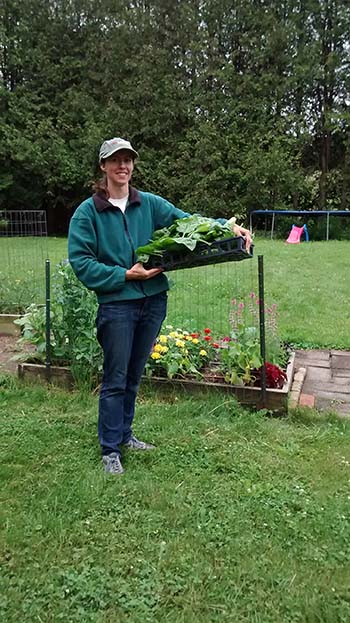
You employ a rather unique fertilizer cocktail made possible by your farm’s hen and rabbit husbandry practices. Can you describe your fertilizer mix, ratios used, and whether you apply it to both your berry fields and your greenhouse plants?
Our greenhouse plants are fed with a liquid fertilizer mix injected into our water, not manure. We use rabbit and aged chicken manure on our berry fields, lawns, and garden beds. We also bag it to sell to our garden center customers. We encourage them to feed their organic gardens with rabbit manure and Espoma Plant-tone each spring. Rabbit manure and chicken manure have different uses and applications. You need to learn what those are to use them successfully.
Rabbit manure is the world’s best fertilizer! It can be used fresh and will not burn plants, as long as it isn’t saturated with urine. Think of it as a pre-pelleted mix of peat moss and slow-release organic fertilizer. It attracts earthworms to the garden, which in turn add their own vermi-compost.
Forget farming worms—just add rabbit manure to your soil, and let the earthworms come to you.
Rabbit manure quickly breaks down into a beautiful loam while lightening the soil and improving moisture retention. Spread around shrubs or mix into your garden in spring or fall. Cover with a layer of mulch to speed decomposition.
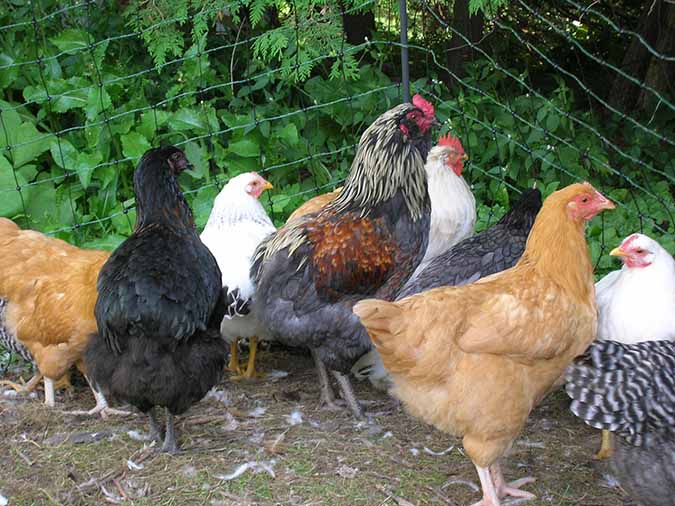
Chicken manure is a “hot” manure. Unlike in other animals, whose manure and urine are separate, chicken manure contains both. The urine component makes it “hot,” due to its high level of nitrogen. Chicken manure must be aged for at least a year before applying it to your garden, or you risk burning your plants. We use a deep litter method in our chicken coop, adding carbon (pine shavings) as needed. If the coop starts to smell, we add a layer of shavings. We also sprinkle scratch on the floor of the coop daily, so the chickens turn and aerate the bedding.
We clean out the coop twice a year. The chicken manure is left to compost in a semi-protected area by our tree line. After a year, the composted manure is full of earthworms and beneficial microbes. We bag and sell this “live” manure at our garden center. Aged chicken manure is excellent for jumpstarting a compost pile or inoculating a new raised bed with life and worms. The high nitrogen content is great for growing greens. Chicken manure is a heavy manure, so we recommend adding it with peat moss or rabbit manure to keep the garden soil from getting too dense.
Your flower, veggie, and herb garden center is only open to the public a limited portion of the year, due to your location. Can you offer specific tips for how you keep your 3,000 sf greenhouse a hotbed of growth during the cold New York winters?
All of our plants are started on site from seeds or cuttings. This avoids concerns of diseases, such as blight, being shipped in from Florida. We begin growing seedlings in February in a growing room in our basement. The 10’ x 10’ room is heated by an oil-filled radiator and has lots of shelves with fluorescent lights on a timer. We fire up the greenhouse in late March. Customers can pre-order their plants from our website starting in April for pickup over Memorial Day weekend.
Our garden center is open for one month from late May to June. Then we remove the thermostats and allow the greenhouse to bake for the rest of the summer, thus sanitizing the benches and aisles. During the winter months, we need to shovel out the greenhouse regularly to prevent snow from collapsing the structure.
You delight in featuring rare and heirloom plant varieties you’ve trialed in your gardens for local hardiness. Can you name several of your most popular and robust examples?
Some of my personal favorites are Valencia and Green Zebra tomatoes, sweet banana peppers, Red Russian kale, Ground cherries, and Cocozelle zucchini. Every year, we quickly sell out of our Carolina Reaper plants (which hold the record as the world’s hottest pepper at over 2 million Scoville units) as well as our heirloom tomato samplers. They both have a dedicated following!
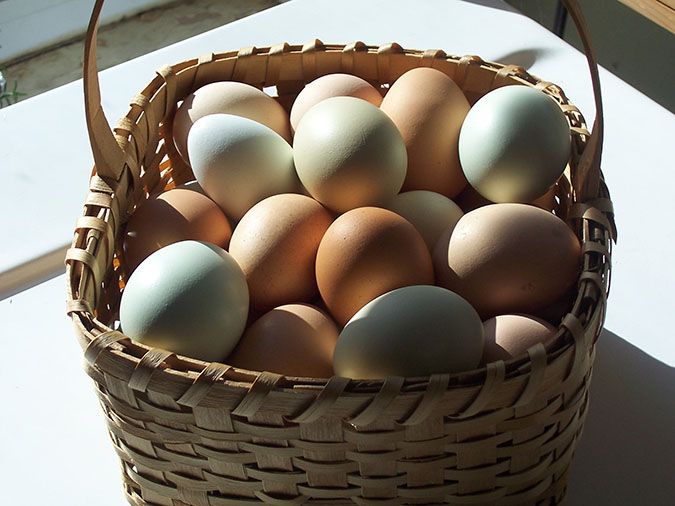
Tell us about your “fresh rainbow eggs from happy hens”—how are they healthier than store-bought eggs, and what breeds do you use to get multicolored shells?
We keep a flock of 30 hens and 1–2 roosters. Our chickens live in a coop with a spacious run under the ramp to our shop. We let our hens out to forage for a few hours each evening, then they return to the coop at dusk. We close them in for the night around 9:00 p.m. Because they’re only allowed out of their run for a few hours, they don’t go far and tend to leave my vegetables and other crops alone. Our chickens also get a big bucket of weeds/veggie trimmings dumped in their run daily. A varied diet gives our eggs rich, golden yolks and a delicious, buttery flavor. Store-bought eggs are pale and tasteless by comparison.
Eggs from pastured hens have additional nutrition and trace nutrients (such as omega-3 fatty acids).
We raise a number of chicken breeds to get multicolored eggs. Rhode Island Reds, Orpingtons, and Barred Rocks lay brown eggs. Blue Andalusians and Polish lay white eggs. Ameraucanas and Olive Eggers lay blue and green eggs. And Welsummers and Marans lay dark brown eggs. When artfully arranged in a carton, they are a beautiful sight to behold!
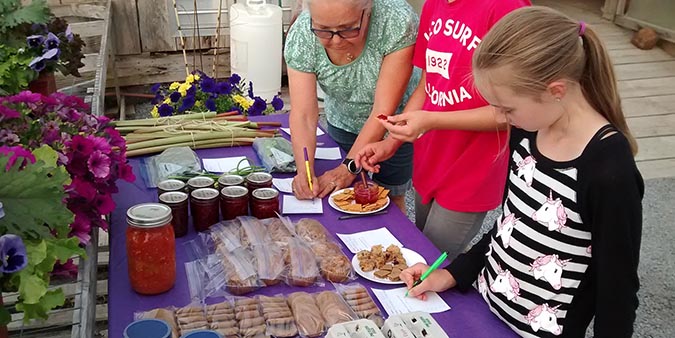
Can you describe your popular Local Food Swap event, held in the summer months each year? How did you conceive this exchange, and what are some of the more unique home-produced items you’ve seen?
One of our customers told us about a local food swap she was hosting years ago. I wasn’t able to attend her event, but fell in love with the idea of bringing neighbors together to share their garden abundance, build friendships, and diversify their pantry.
A food swap is the epitome of a local food network. Bring 5–10 homegrown items to trade for other home-produced goods. At our last swap, I brought raspberry jam and banana bread and came home with rhubarb, fresh eggs, raw honey, blueberry muffins, French onion soup, fresh garlic, home-canned tomatoes, lilac-hibiscus jelly, Jerusalem artichoke dip, and salad greens.
Food becomes your currency, and connections are formed that will enrich your life.
In this day and age, when everyone stays home and turns to Google for inspiration, we are losing our connections to those around us. So much knowledge and wisdom can be found in those near you. Swaps are a great opportunity to get out of the house and expand your horizons. Check out FoodSwapNetwork.com to find a swap near you or learn how to start a swap in your community.
Any last tidbit of gardening, eating, or healthy living advice that would be of interest to our Grow Network community?
Anyone can homestead or do something to start producing their own food. Grow some potted herbs on a sunny windowsill, buy a whole pastured chicken and cut it up yourself, or grow salad greens in a pot. Start small and feel the satisfaction of learning to feed yourself real food!

The Grow Network is a global network of people who produce their own food and medicine. We’re the coolest bunch of backyard researchers on Earth! We’re constantly sharing, discovering, and working together to test new paths for sustainable living—while reconnecting with the “old ways” that are slipping away in our modern world. We value soil, water, sunlight, simplicity, sustainability, usefulness, and freedom. We strive to produce, prepare, and preserve our own food and medicine, and we hope you do, too!
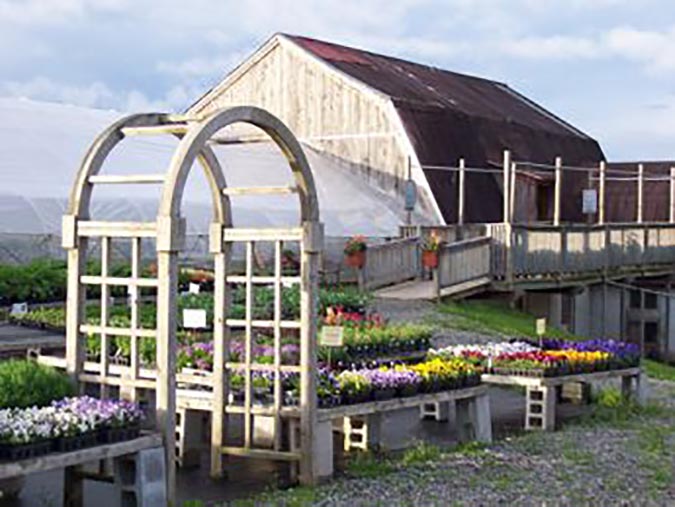







COMMENTS(1)
Peafowl manure is amazing for fruit trees. I dig up the soil in their pen and spread it around the trees to the drip line. If you want the tree to expand, spread it from the drip line outward. A crabapple tree that had a peafowl pen just outside the drip line more than doubled in size over a few years, and it was an older tree that was already large.